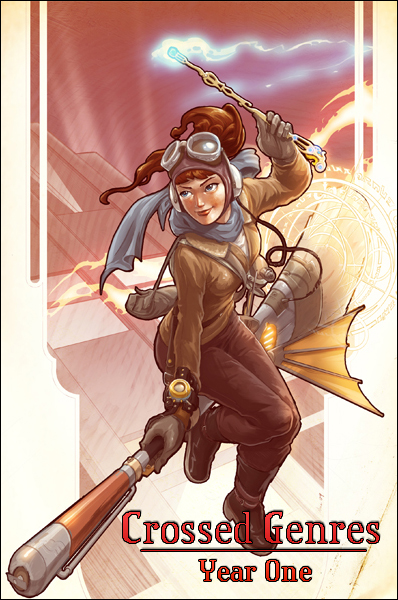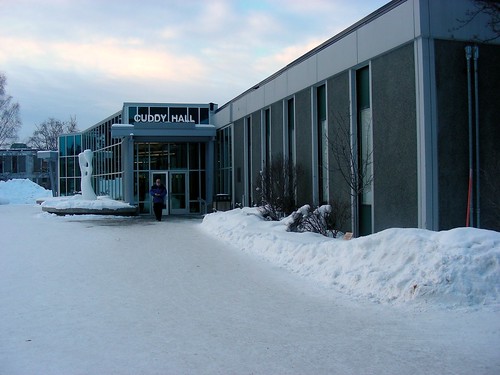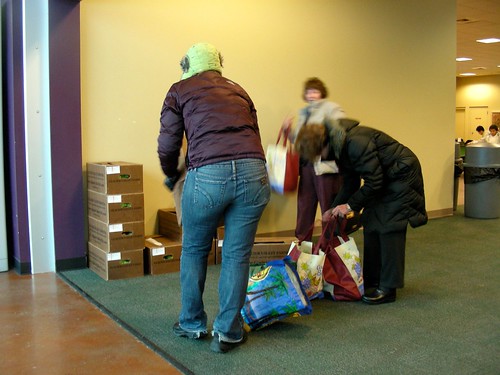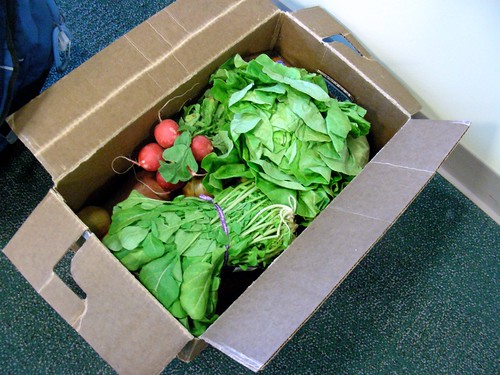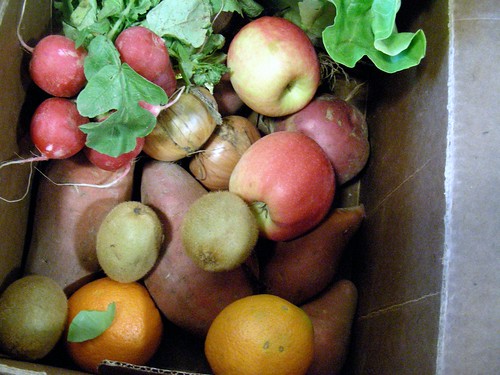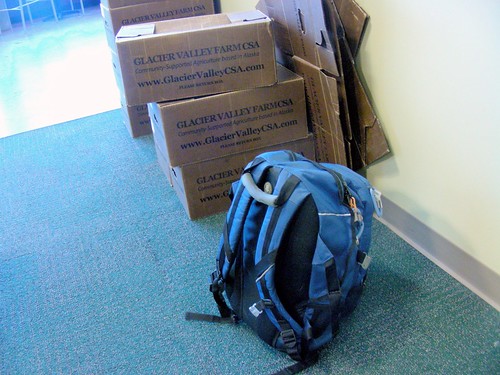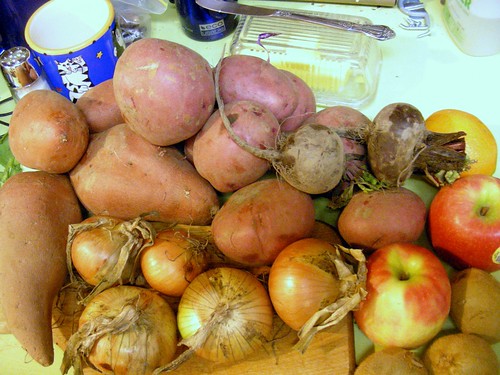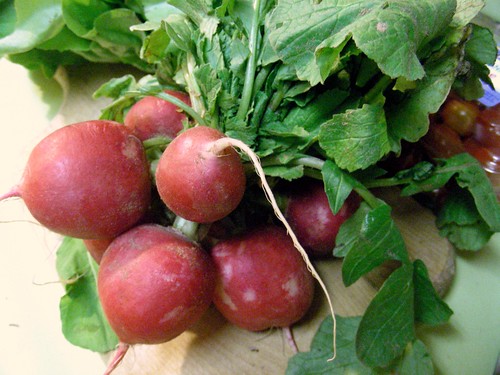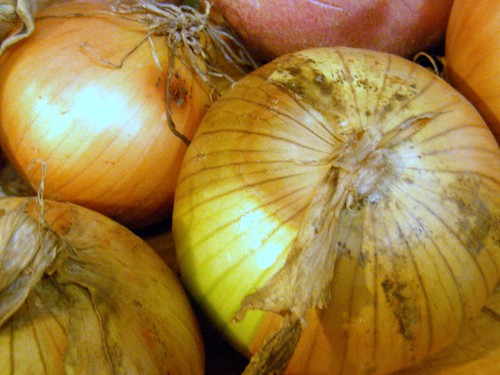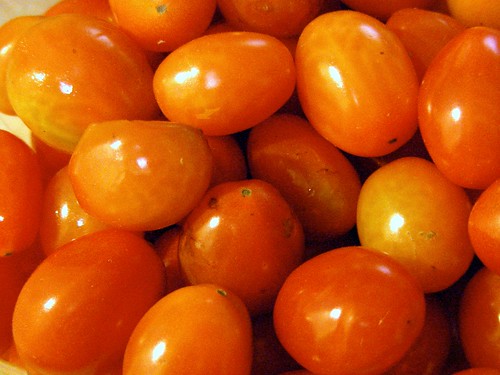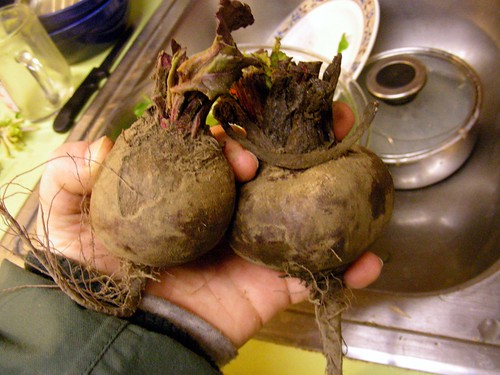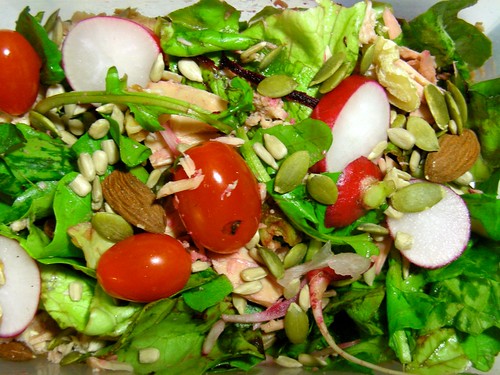
Mars mosaic from a compilation of images captured by Viking Orbiter 1. At center is the entire Valles Marineris canyon system, over 3,000 km long and up to 8 km deep. To the left are a volcanoes of the Tharsis bulge — Ascraeus Mons to the north, Pavonis Mons in the middle, & Arsia Mons in the shadow. Photo credit: NASA/USGS (via JPL Photojournal)
Worldbuilding, Wikipedia helpfully tells us, is
the process of constructing an imaginary world, sometimes associated with a fictional universe.
The Wikipedia article focuses on the creation of worlds & the cultures that live in them by writers of science fiction & fantasy — for instance, Tolkien’s Middle-Earth in The Hobbit and The Lord of The Rings trilogy, or the planet Cyteen in C.J. Cherryh’s novels Cyteen and Regenesis, to name but a couple of my favorite imaginary worlds.
But to my mind, worldbuilding isn’t restricted only to completely imagined worlds & people — really, any writer of fiction engages in worldbuilding, even when writing the most mainstream fiction that takes place in a world looking “just like” the world you & I live in, because any fiction involves presenting the particular world(s) & worldview(s) of the characters that inhabit it.
As if you & I actually lived in the same world. Because isn’t your worldview, no matter who you are, so much different than mine? Yet there are some things we can agree on, at least most of us can — if only that rocks are hard to the touch, & water is wet. Consensual reality, it’s called. And that’s the point, at least in these coupla paragraphs of this blog post: there are some things a writer can generally assume her audience is familiar with, so that she doesn’t have to explain them; but other things that exist outside your normal frame of reference — that she has invented — yeah, of course she’ll need to explain. (Or show. As that familiar writer’s proverb goes, show don’t tell — though, as with all rules, there are exceptions.) Mainstream fiction, so-called, differs from science fiction & fantasy mainly in how closely it adheres to consensual reality, how much worldbuilding it has to do.
I could go on a lot longer about my thoughts about the different types of worldbuilding in different types of fiction (or, arguably, nonfiction), but then I’d never get to the point of this post — which is my worldbuilding, & how the recent decision by the U.S. Supreme Court decision in Citizens United v. FEC — along with everything else in U.S. & international law & custom that grants undue influence in how our governments & economies & lives are run to the fake persons known as corporations — is really really really good for my worldbuilding.
But really really really sucko for the world I actually live in.
Good for my worldbuilding

Artist's conception of Mars in process of terraformation from Wikimedia Commons. Used in accordance with GNU Free Documentation License, Version 1.2.
In early 2007 I decided that to jumpstart my writing after “life,” as usual, had decided to interfere with it, I was going to do National Novel Writing Month that November. The good people of NaNoWriMo itself suggest that it’s best not to do NaNoWriMo with a project one already has underway — which in my case would have been Mistress of Woodland — so I pulled an idea off the backburner of my mind & decided to work on a new project, Cold, which would be about two young women on a planet in the late stages of terraformation.
I told my friend Chris about it, & he told me I should read Kim Stanley Robinson’s Mars trilogy — Red Mars, Green Mars, Blue Mars. My brother Dave had previously recommended those books to me too. So, over the late winter & spring of 2007, I read them.
Good call, guys.
If I were to summarize the story of Robinson’s trilogy in one sentence, I’d say, It’s a science fiction story about terraforming Mars. Hence Red Mars — what the colonizers of the planet find when they get there; Green Mars — how it becomes green with growing plants; Blue Mars — how it becomes a second blue marble in the sky, like our own Earth, rich with liquid water on its surface & in its atmosphere.
But really, that’s only one theme of the trilogy. There’s also an ecological theme: is it right & ethical for us, humans from planet Earth, to remake another planet — even a presumably “dead” planet like Mars — into a second Earth? And meanwhile, what’s happening environmentally on the real Earth? — climate change, global warming, melting of Antarctica, rising seas, continuing overpopulation & pollution… in short, planetwrecking, at least in terms of keeping it habitable for human beings & numerous of our fellow species.
There’s also a third dominant theme: the long & arduous struggle of Robinson’s Martian colonists for freedom from the political & economic domination of Earth. Freedom not only from Earth’s numerous governments — but especially from Earth’s corporations, which have become so powerful that they are in many ways more powerful than governments themselves, both on Earth & on Mars.
Sound familiar?
Robinson isn’t, of course, the first SF writer to extrapolate from the scary situation we’re already in today vis-à-vis corporate power into some even scarier futures, with megacorporations having for all intents & purposes replaced any semblance of government of, by, & for the people. (Unless, of course, you persist in perversely insisting that corporations are people, like the U.S. Supreme Court does.) The science fiction subgenre called cyberpunk comes particularly to mind.
My imagined science fiction future is already extrapolated from the present, & the power corporations have is part of that. During NaNoWriMo 2007, for Cold, I started inventing a government called, simply, Consensus, which really is a government of, by, & for the people, but it was during NaNoWriMo 2009, for Long Dark, that I discovered how Consensus came into existence. I was writing stuff in the same story universe as Cold, but about three centuries earlier in the timeline; there, it became more apparent that the Consensus government came out of particular (invented) historical circumstances: namely, a rebellion by people living & working in the Asteroid Belt & outer solar system against the tyranny & exploitation of corporations, which, as usual, cared more about the corporate bottom line than about the welfare of their workers & their workers’ families.
So you see, that’s what’s so great about the Citizens United decision, & other corporate-power related phenomena. Here’s another word for you: verisimilitude: the appearance of being true or real. The more our public officials hand over the reins of government to corporations, the more plausible the story world I’ve built becomes. Wow, thank you Supreme Court!
Except, uh… like I said. This shit is —
Bad for my world
No, corporations aren’t the only things — er, I mean “people” — whose greed, thoughtlessness, short-sightedness, stupidity, self-aggrandizement, etc. etc., are bad for the world. They’re just on the current cutting edge of it. And the more we, or public officials supposedly acting in our name, hand political power to them, the more deeply cutting their edge is. The Citizens United ruling is just another step in that direction.
And nice as verisimilitude in fiction is, what would be even nicer would be to live in a world in which, for instance, we could trust that our elected officials were really responsible to us, instead of to corporations whose paid propaganda (so called “free speech”) put them in office.
In May 2007, when I was an active Wikipedia editor, I spent lots of time researching the career of Tom Anderson — in fact, I wrote most of the article about him in Wikipedia. Alaskans will recognize Tom Anderson as the first of our former legislators to be tried and convicted in the federal probe into political corruption in Alaska. I wrote the article in my typically geeky, super-detail-oriented style, with lots & lots of cites… & it took a lot of energy & effort. It’s certainly a lot more detailed article than you’re typically going to find in Wikipedia on a two-term state legislator, corrupt or not.
But for me it was well worth it, because compiling that biography, based solely on the written record (mostly articles from the Anchorage Daily News and the Juneau Empire) really brought home the lesson: whenever you bring corporate money into contact with public elections & officials, there are inherent conflicts of interest for those public officials which will erode their ability to serve the people who elect them. Sometimes, a public official will be so bollixed up by the conflict that they won’t even recognize it. Tom Anderson’s case is particularly illustrative.
For example, consider this instance from Anderson’s career, involving his relationship to Northeast Community Council, the council for the same part of Anchorage that Anderson himself was elected to represent in the Alaska House of Representatives. (Note that I’ve removed the citations contained in the article for ease of reading; see the article for citations.) —
Anderson played a significant role over two years from 2002 to 2004 in changing the composition of Anchorage’s Northeast Community Council to reflect more conservative political and economic views. Anderson encouraged friends and allies, including pastors and members of the locally influential Anchorage Baptist Temple, to pack the town meeting-style community council elections. By May 2004, six of the nine community council board members, including its president, were friends and political allies of Anderson. While Anchorage’s community councils have no real authority, they are influential with the Anchorage Assembly because, according to Dick Traini, then chair of the Anchorage Assembly, “they are the active people in the community that choose to be involved.” Community council involvement has been a first step in the political careers of several Alaska politicians.
In July 2004, Anderson was criticized in an Anchorage Daily News editorial for signing a $10,000 contract in 2003 with the Alaska oilfield services company VECO Corporation to consult “on local government and community council affairs.” Anderson had earlier told the Anchorage Daily News that he’d been approached by VECO after the end of the 2003 legislative session because it was aware he’d done similar consulting work before he became a legislator. He told the newspaper that most of his work for VECO was in seeking out civic and charitable events for the company to get involved in, and that he also monitored Anchorage’s community councils to see if there were zoning cases or other issues under discussion that might affect VECO. The newspaper noted that Anderson had received about $4,000 in campaign contributions from VECO employees or their spouses in the 2002 election that won him his first term in the Alaska House. By July 2004 he had received at least $3,500 in VECO-related contributions for his 2004 reelection bid.
Members of the community council later recalled Anderson attending all their meetings during 2003, and assumed he was attending as their representative in the state legislature. They did not learn he was there as a consultant for VECO until 2004, when his state financial disclosure form was filed with the Alaska Public Offices Commission, as required by law.
By the April 2006 election for Northeast Community Council, the effects of the 2004 takeover had been partially reversed, leaving the council nearly half and half liberal and conservative.
Indeed, who was Anderson representing when he attended community council meetings — his constituents in the Muldoon area of Anchorage (including my brother’s family)? or VECO, which was not only lining his pockets as a supposed “political consultant,” but also helped fund his election in the first place? (Some folks might also have interest in the connection between Anderson & Jerry Prevo’s megachurch the Anchorage Baptist Temple.)
Here’s another instance, from a couple years later —
In July [2006] Anderson was hired by the Anchorage Home Builders Association for $2,500 per month. The following month he testified before the Anchorage Assembly in favor of two stores that Wal-Mart wanted to build in his legislative district. The Northeast Community Council opposed the stores. At the Assembly meeting, Assembly chair Dan Sullivan introduced Anderson as “Representative Anderson,” but Anderson corrected him, stating that he was at the meeting in representation of the home builders association, which favored the Wal-Mart stores.
Again, who was Anderson representing? His legislative constituency? Or the home builders association & Wal-Mart? Obviously, he believed all that was necessary to keep himself in the clear, ethically, was to take off his “Representative” hat & put on his “paid consultant” hat, & magically the two roles would be kept completely separate. Right. Based upon the law as written, Anderson was not acting illegally. But the presence of conflict of interest is obvious — however oblivious he himself was to it.
Anderson was ultimately convicted of seven counts involving extortion, bribery, conspiracy, and money laundering after taking $26,000 worth of bribes funneled by Anchorage lobbyist Bill Bobrick through a sham corporation that Anderson was supposedly “consulting” for. The scheme was supposed to be for the benefit of a private prison company, Cornell, which was reportedly unaware of any of this; one of its employees, Frank Prewitt, was funneling the money as a confidential informant for the FBI.
I ran out of steam to write more detailed coverage on Anderson’s trial & its aftermath, but I remember quite well that his obliviousness to his ethical lapses extended into his public statements about his conviction. He still (or so he claimed) believed he’d done nothing wrong. Other former lawmakers convicted out of the same federal corruption investigation seemed similarly oblivious. Vic Kohring, Ted Stevens (who in my opinion is guilty even if his conviction was set aside because of prosecutorial misconduct) — all of them claim I did nothing wrong — even Pete Kott still claims this in spite of being caught on camera taking a bribe. I did nothing wrong. They take it as a given that it’s okay to take money, gifts, not to mention campaign donations, which will now be supplemented by unlimited campaign advertising from corporations so long as the corporations like them.
A lot of members of the public take all this as a given too. A lot of the public is going right along with the Citizens United decision, stating it as a great victory for “free speech.” Uh, s’cuse me — don’t you mean paid-for-with-megabucks speech?
Why do they take it as a given? Name your own theory, but here’s mine:
Most of us have become desensitized. We’ve grown so accustomed to the power of corporate money in every aspect of our lives that we take it for granted. It’s the famous “boiling frog” thing all over again. Over the span of many years — more than a century, now — as our lawmakers & law interpreters (the courts) progressively hand more & more power over to corporations —
- corporate “personhood”
- privatization of government functions — e.g., prison privatization, use of corporate private armies (mercenaries) like Xe (formerly Blackwater), etc.
- deregulation
- granting corporations “ownership” over segments of nature, like water, genes, microorganisms, etc.
- unlimited corporate “free speech”
- etc.
— we’re gradually, just like that frog, having the heat on us slowly turned up higher & higher & higher.
Okay, so the Citizens United case was a bit more widely noticed. See how many people are looking around and asking, Whoa… how’d we get here? This is fucked up.
Most of us do know that something is wrong, but we can’t seem to agree what the problems are, & therefore their solutions. And thanks to the power our government has handed over to corporations, they are free to use their “free speech” (that is, their money) to influence & distort our perceptions about what the problem is. So we continue to point our fingers at the wrong causes, propose the wrong solutions, fight about it all — & the heat keeps turning up, & corporations continue to enrich themselves at our expense, & accountable honest government slips ever further out of our hands.
Big Government (the kind the Tea Party folks don’t like) & Big Corporations are just two different faces of the same phenomenon: the fading away of democracy. The replacement of government of, by, and for the people with government of, by, and for the powerful few in order to control & exploit all the rest of us.
You know what I’m saying — that psychopathy thing I talked about a couple of weeks ago with reference to corporations. But y’know, psychopathic Big Government like, say Nazi Germany or the Soviet Union under Stalin, or a theocracy like those which Christianists are aiming for — in which anyone who doesn’t agree to toe the line of whatever arbitrary set of rules established by whatever arbitrary set of preachers or priests who claim to hold the blueprints of the heavens of some arbitrary bully-god — none of that crap is exactly desirable either.
What is desirable? Real democracy, of course. Real government of, by, and for the people. Government in which every stakeholder has a say and every stakeholder’s rights are protected and honored. Every stakeholder means every single person (real persons, that is, not fake “corporate persons”) who has any stake at all in how we operate our society. Which is to say: every. single. one. of. us.
That’s not how the U.S. government was set to operate, unfortunately. Our Founding Fathers did their best according to their own lights, I suppose, but they left a lot of stakeholders out of the loop. Women. Slaves. Children. Etc. Some of these oversights have been partially corrected through constitutional amendments, but the fact remains that real franchise — real ability to have a say in how society operates, & to have one’s own rights to life, liberty, & the pursuit of happiness — is still heavily restricted according to various kinds of status. Most of us still live under other people’s thumbs in one way or another. Some people win. Some people lose: their jobs, their homes, their families, their lives.
It’s just the way of the world, you say. But why? Is there another choice?
So here we are, back to worldbuilding
How can a society that is based on “some people win, and so does everybody else” be built?
That’s in essence what I’m trying to do in inventing the government of which my characters are part in Long Dark & Cold, which I named, simply, Consensus.
Notice that I said the government of which my characters are part. Not, by which my characters are governed. Because in this government, being a part of the government & being governed by it are one & the same thing. Nobody is not a member of the government. It truly is of, by, for the people.
Whoa, now, but wait a minute. Isn’t that pretty damn unrealistic? What about, y’know, that big word I used earlier? Verisimilitude.
Well, that’s the thing. I think it is realistic. Not only that, but just as the corporate exploitation against which my characters’ ancestors rebel can be easily extrapolated from the stuff we’re already living with in the world we live in here & now, so can I extrapolate my society’s Consensus government from forms of governance that already exist & are used successfully in the world we live in here & now. There are places, there are people, who are doing it now.
So nowadays I’m reading a lot about consensus, sociocracy, collective intelligence, & related ideas, on top of all the thinking & writing about this stuff I did on the fly during NaNoWriMo 2007 & 2009. I’ll be writing more about this in other blog posts.
Meanwhile, may these ideas be the foundation of more worldbuilding in the here & now of 2010 planet Earth. I see little hope for the old tried & untrue methods of adversarial & often antagonistic systems of governance that we’re more accustomed to. Health care reform debate, anyone?
How very pretty & hopeful our world looks out of the hostility & namecalling between political rivals these days. Not.







